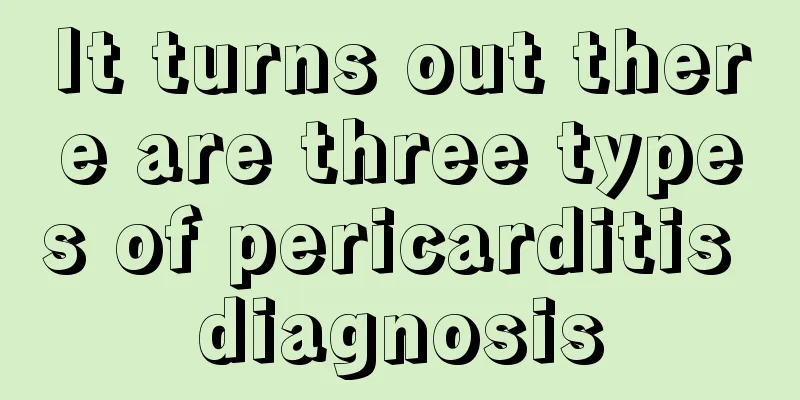It turns out there are three types of pericarditis diagnosis

|
Pericarditis is a relatively common disease in daily life and poses a huge threat to human health. Therefore, patients with pericarditis must seek medical treatment in a timely manner. So what are the diagnostic methods for pericarditis? In fact, the diagnosis of pericarditis requires the following three examinations, so don’t ignore them. 1. X-ray examination: When the amount of effusion exceeds 300 ml, the cardiac shadow will increase in size to both sides and the cardiac-septal angle will become acute. When the volume exceeds 1000 ml, the cardiac shadow becomes flask-shaped and varies with body position. Weakened or absent heartbeat. 2. Electrocardiogram: In dry pericarditis, the ST segment of each lead (except avR) is elevated, returns to the isoelectric line after a few days, and the T wave is flat or inverted. When there is pericardial effusion, the QRS complex is low voltage. 3. Echocardiography: It shows liquefaction dark areas in the pericardial cavity, which is an accurate, safe and simple diagnostic method. Currently, the treatment of this disease is still mainly focused on the treatment of the primary disease. Symptomatic treatment measures can be taken when necessary, such as giving painkillers to patients with chest pain. If the amount of pericardial effusion is large, pericardiocentesis can be performed. Traditional Chinese medicine believes that this disease mostly falls into the category of "heart pain", "chest pain", "phlegm and fluid", "edema" and other diseases. Its onset, especially pericardial effusion, is mostly related to damage to the spleen and stomach, retention of water and dampness in the body, and blockage of the pericardium. When water and fluid accumulate in the pericardium, they can press on the heart internally and the lungs externally, causing shortness of breath and discomfort. Therefore, the key to treatment is to remove the evil of water and fluid. Once the water is removed, the wheezing and shortness of breath will naturally subside. Inflammation of the pericardium, which may be acute or chronic, may result in pericardial effusion. The above is the diagnosis method of pericarditis introduced to you. I believe you have understood it and I hope it will be helpful to you. |
<<: The clinical manifestations of fibrinous pericarditis are actually like this
>>: There are four methods for the treatment of tuberculous pericarditis
Recommend
Women born at this time are the most calculating
The time of a person's birth is one of the ch...
What symptoms does colon cancer usually manifest itself in?
The appearance of colorectal cancer will make man...
What to do if eczema forms yellow scabs
If you have a constitution that is prone to eczem...
Is it okay to wash your face with pure milk every day?
Washing your face with milk can make your facial ...
What to eat during the Xiaoxue solar term
In order to better engage in agricultural cultiva...
What are the effects of hairy litchi
We often see a kind of fruit in supermarkets now....
What impact does hypothyroidism have on pregnancy?
Many people may not have come into contact with h...
What are the symptoms of gastroenteritis
Gastroenteritis is a common gastrointestinal dise...
Can umbilical cord blood cure liver disease
Other selection functions are very important in c...
How to remove tea stains from white clothes
How to wash tea stains from clothes? Several simp...
Is it normal to have pits on the neck due to thyroid cancer?
The pits on the neck of thyroid cancer patients m...
Reasons why girls blush
There are many reasons why women blush, including...
Is it scientific to apply garlic on a mosquito bite?
Mosquito bites are a very frustrating phenomenon,...
What are the symptoms of lung cancer? To prevent lung cancer, pay attention to these symptoms
When people with frozen shoulder experience worse...
What are the treatments for advanced gastric cancer?
In recent years, gastric cancer has become one of...









